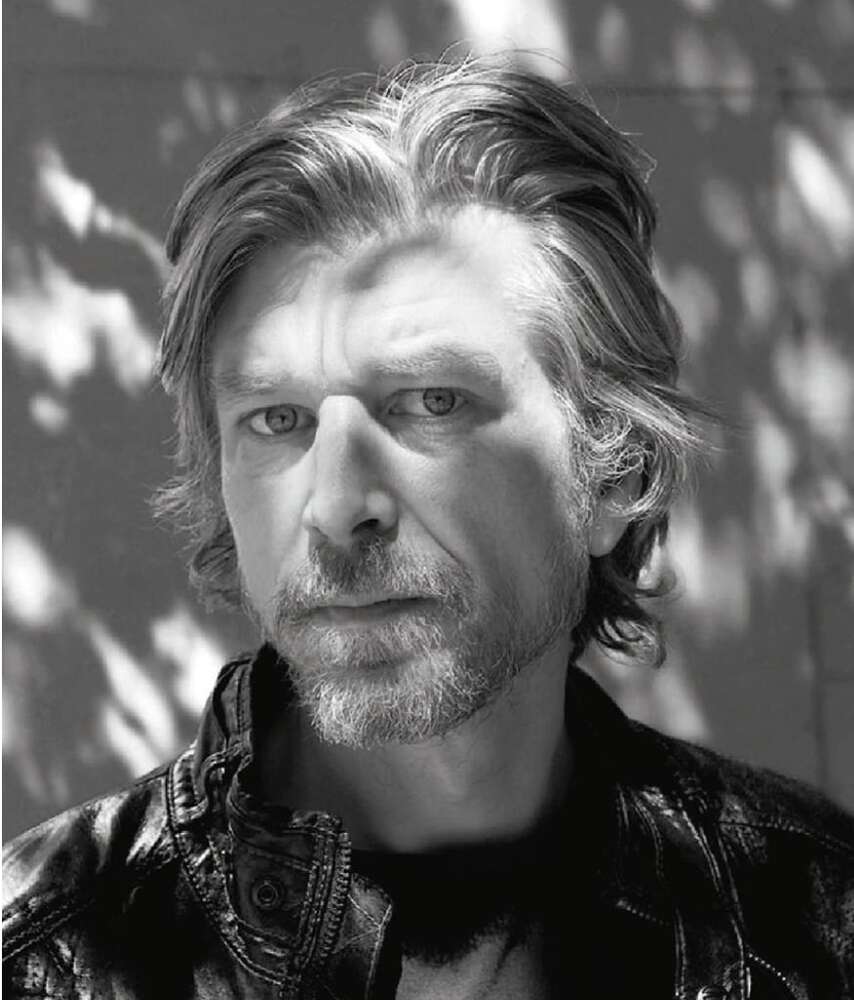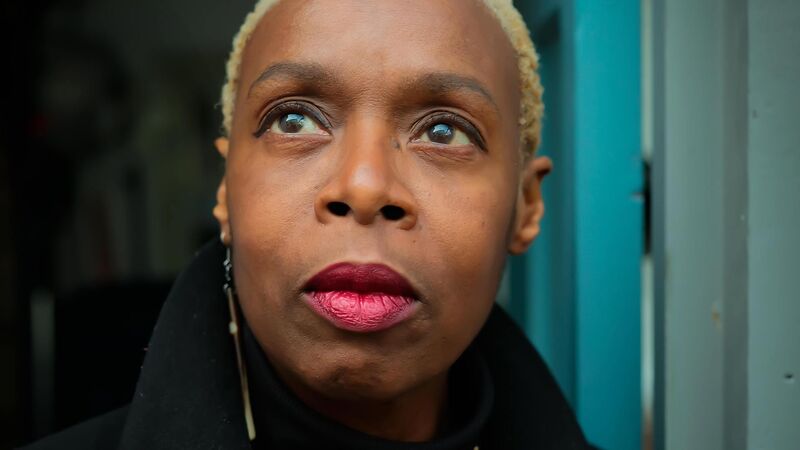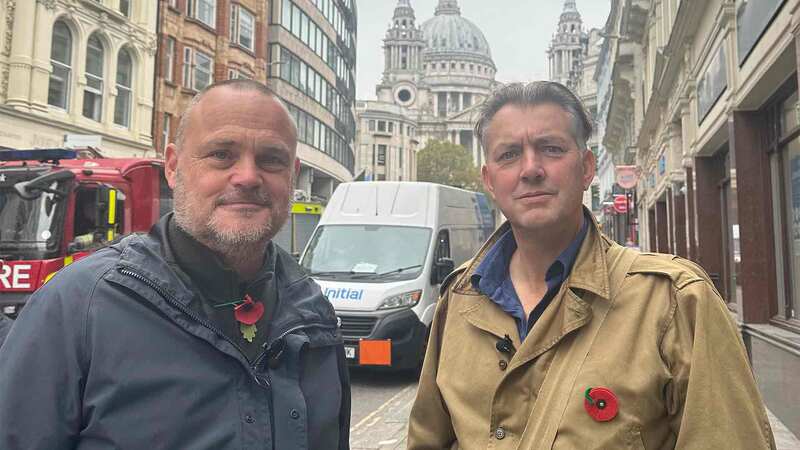You are viewing your 1 free article this month. Login to read more articles.
Karl Ove Knausgaard | 'I was raised in a literary climate, and I studied literature, and there is a certain way that good literature is, and it’s not what I’m doing, it’s something else'
It’s certainly an irony that Karl Ove Knausgaard, the Norwegian writer hailed as a new Marcel Proust, is now celebrated as a literary sensation, and inspires dramatic photoshoots of his craggy good looks, when the very work that has brought him this success deals so often with themes of personal humiliation, gaucheness and failure.
Some Rain Must Fall, the latest volume of his six-strong autobiographical sequence My Struggle to be translated into English (by Don Bartlett), is the story of the 14 years Knausgaard spent in the small Norwegian university town of Bergen, from 1988 to 2002. As he relates in the book, he has almost nothing to show for those years: “a flash of recollection here, a flash of recollection there”; a total of 14 photographs; a pile of letters. That’s it.
Knausgaard had gone to Bergen at the age of 19 to join its Writing Academy: he was not a great success as a student, and unimpressed by his work. He went on to further study and, while others left, he stayed put in the rainy coastal town: hanging out with his brother, doing some casual work assisting at the local psychiatric hospital. There was a bit of semi-delinquent behaviour, breaking into cars; and a memorable if isolated episode of self-harm when he sliced up his face with a razor. There were girlfriends, and later on a marriage, though in the end it wasn’t to last. There was a passion for books and writing; yet while his peers developed and flourished, Knausgaard had the persistent feeling that his own work would never amount to a hill of beans.
It was a “terrible time”. ”I knew so little, had such ambitions and achieved nothing,” he remembers in the book.
“I felt like I was stuck,” Knausgaard explains, his manner subdued, but his eyes bright and focused.“I could have, you know, travelled to London and studied there, I could have done a million things. But I didn’t, I just stayed. I didn’t have the imagination to try to get out of it, because I couldn’t calculate at all. I guess the book is also about that I needed to be there, to be at the same place, safety, just staying put in that little city where nothing was happening.”
The shadow of his painful childhood with a controlling, physically violent father, explored in depth elsewhere in his work, hangs over the book. Knausgaard describes his younger self as having “no self-belief, no self-esteem, and I rejected friendship and things like that because I couldn’t believe anyone could be interested in being friends with me”.
But it is typical of Knausgaard’s work that he makes a compelling narrative out of those 14 empty years in Bergen; his style, dubbed “hyperrealism” by critics, strikingly reworks the relationship of narrative to experience, giving weight to the most mundane of details—such as doing the washing-up—alongside the fleeting or unpalatable thoughts and emotions that are often repressed or barely register in consciousness. He says: “There is something that the [literary] narrative is ignoring, you know, and those are the things I am interested in.” In Some Rain Must Fall he also shows a startling ability to re-create the world of his younger self, still unformed, his life path not mapped out, no literary success prefigured or expected.
This is the fifth book in the sequence; famously, the first two caused huge uproar. A Death in the Family explored the demise, from alcoholism, of his father, in unsparing detail; the follow-up, A Man in Love, looked equally frankly at the writer's experiences of marriage and fatherhood. Knausgaard's father's family was furious and an estrangement followed; meanwhile there was a crisis in his partnership with his second wife, novelist Linda BostroÃàm. Knausgaard says: “Nobody sued me in the end, and nobody killed themselves, and people got hurt but they are coping with it, I think. It wasn’t that bad. OK, it was bad. But it was [just] the shock of it, in a way, it hadn’t been done in Norway before.
“I wanted to write just one book, the book about my father and his death—that was something I wanted to write almost from the minute I experienced it, but I couldn’t find a way to enter it, to express how it was. It was like the novel I had been writing couldn’t do the work. I tried for many years, but it was always fake to me.
Then I started almost out of frustration: ‘Fuck this, I’ll just write exactly as it was.’ And that was a complete liberation. Everything was easy, the writing was easy, the hard stuff was enduring the banality of the writing and the burden of not trying to make it into ‘good literature’, but just writing, writing, writing, almost like a diary or a letter.”
Discernably, the later books in the sequence, which look back to his childhood (Boyhood Island) and adolescence (Dancing in the Dark), avoid such raw revelations about recent history and his peers. Some critics think the later volumes lose the white-hot intensity that makes the first books so striking, as a result. Knausgaard explains: “The first two books, I didn’t think about the readers. I didn’t think anyone was going to read it, and then I was much freer. Then the reaction came, and it was more and more difficult physically to write about other people. I spared them. It is inhuman, if you push that direction you end up outside humanity.” Is his humanity and his best writing antithetical, then? “They are. And that’s the place where the struggle takes place, exactly, in the collision there.”
“Struggle” is an important word: in another notorious gesture, Knausgaard named his series My Struggle, referencing Hitler’s autobiographical manifesto Mein Kampf. “It’s a good thing that there’s an echo, there’s a big, big irony between the two struggles,” he explains. “You have the small struggles of everyday life which everybody recognises, and are all about the mistakes you do, the misunderstandings, being shy, not being able to talk, blushing, all those kinds of things; and there is nothing of that in Hitler’s book, it doesn’t exist. He is writing about, you know, the perfect human being who doesn’t have this.”
Despite all the praise Knausgaard has garnered at home and internationally, the writer’s literary struggles continue. When he started A Death in the Family, he battled the constant sense of, “this is stupid; this is so little and insignificant”; and writing is still like that, he says. “It is always difficult, and I never know when I do something whether it is good or not, I have to give it to my editor [at Oktober] and I have to trust him, even if I hate it.”
He doesn’t consider what he writes to be “good literature”, he says, “because I was raised in a literary climate, and I studied literature, and there is a certain way that good literature is, and it’s not what I’m doing, it’s something else. I am not stupid, I know since people are reading it the way they are, there is something else in there that has literary quality and it is not related to the sentences but is connected with the feeling of presence, I think, presence in the book. Closeness to yourself. But I don’t think it’s great literature, no, no, no.”
This article originally appeared in The Bookseller magazine of 4th December 2015.
Picture: © Sam Barker










